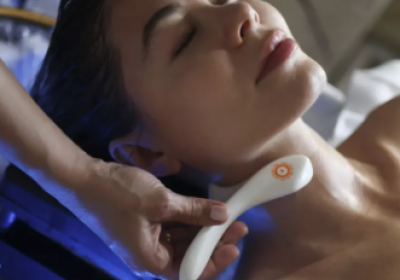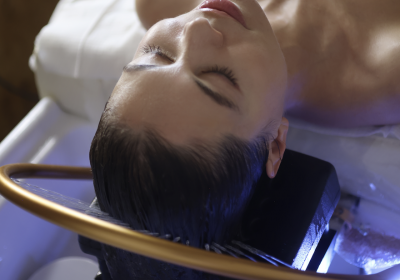Cellulite causes lumpy, dimpled flesh on the thighs, hips, buttocks and abdomen. Despite being harmless, unappealing appearance of cellulite can impact one’s self-esteem. Some women can attest to the fashion restrictions it poses, such as wearing shorts, skirts, beachwear — basically anything that shows skin. Others may even develop depression or anxiety.
Cellulite results from an excessive storage of fat in adipose tissue, which exerts considerable pressure on the surrounding tissue of the skin and creates an appearance of irregular dimples. The dimples result from fibrotic bands called septae, which cause the fat to be divided into tiny pockets. As these begin to bulge through the fascial connections in the skin, this creates the formation of dimples and bumps.
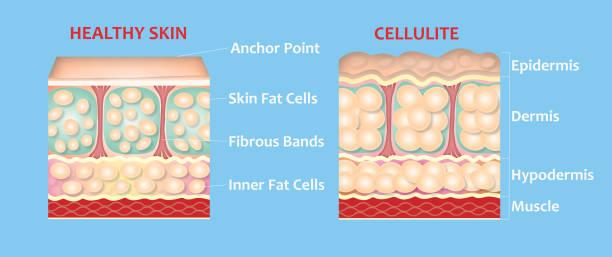
Cellulite is caused by impaired lymph and microcirculation, genetic factors, pregnancy and hormonal disorders and is aggravated by poor diet, sedentary lifestyle, accumulated toxins. As we age and our skin loses its elasticity and cellulite becomes more visible. The female body starts to produce less oestrogen and tissue blood supply is decreased; this reduces the amount of collagen in the connective tissue fibres. When connective tissue fibres weaken, the bulging worsens increasing the appearance of cellulite on the skin’s surface.6 Cellulite can also happen during pregnancy and younger years when excess oestrogen leads to the abnormal blood flow within the skin and fatty tissue, exacerbates fibrosis and the formation of nodules in the subcutaneous tissue.6 It’s estimated that more than 80 percent of all women 21 years and older have cellulite.1 However, cellulite isn’t forever. You can get back the radiant, tight and smooth skin, you want!
As a natural medicine practitioner, I do not believe in harsh diets and weight loss protocols, I believe that once the body is in balance, it will define the weight and shape that is optimal for you. However, I also understand the stigma around cellulite and physiological impact it may have on one’s mental health. And in answer to my clients’ requests, I have designed a programme with the leading aesthetic doctors and naturopaths to combat cellulite and the issues around it with the help of FDA-approved skincare devices, skinceuticals, phytonutrients, dietary and exercise protocols.
It is important to acknowledge that none of these protocols work in isolation. In order to get rid of cellulite, you will need to simultaneously address various aspects of your wellbeing such as diet and hydration, exercise, herbs and supplements, stress management, sleep and rest, toxin reduction to name a few. Below is the summary of the key protocols, that you need to incorporate to achieve long-lasting results.
1. Stimulate lymphatic flow with the help of massage, sauna and dry skin brushing
Treatments, such as massage, sauna and dry skin brushing stimulate lymphatic flow, drain excess fluids and remove toxins.
Vigorous massage is used to encourage removal of interstitial fluid and improve lymphatic drainage in individuals with decreased venous return.10
Traditional saunas use heat of the cabin to encourage the body to perspire, while full spectrum infrared saunas heat the body from the inside without raising the temperature in the cabin to uncomfortable levels. Because of this, a person feels more comfortable staying inside for the recommended 30–40 minutes per session, enabling longer sessions and deeper levels of detoxification. Additionally, frequent infrared therapy can lead to enhanced production of collagen and elastin, which also play an important role in the firmness and aging of skin.11
Dry skin brushing involves using a soft, natural- bristle brush with a long handle on your skin before bath or shower. Use long strokes to gently scrub the dry skin, from feet to head, including the front of the body, arms and neck, moving inward towards the heart. While dry skin brushing won't completely remove cellulite, it helps to contribute to even distribution of fat deposits under the skin and a much smoother, and firmer, look and feel of your skin.
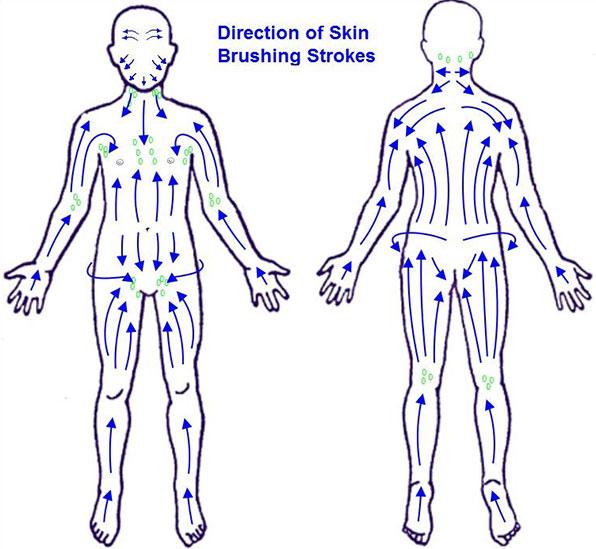
You can also consider other protocols that stimulate lymphatic flow: contrast showers, cupping, jumping on a trampoline, jogging.
https://www.youtube.com/watch?v=kGHQRwFRAb8&t=300s&ab_channel=Dr.DavidGeier
2. Hydrotherapy
The hydrotherapy massage involves immersing the client in a warm and relaxing thermal bath while the therapist uses a pressure jet of water to intensively massage problem areas. The treatment reduces cellulite, stimulates the lymphatic system, tightens skin, and dramatically reduces swelling and puffiness.
3. Cupping
Cupping is a Chinese traditional healing practice that’s been around for thousands of years. The treatment involves placing the open side of heated cups directly on your skin. This creates a vacuum effect that pulls surface tissue into the cup. Cupping helps stretch and relax the hardened connective tissue beneath the skin, increasing elasticity and helping reduce the dimpled appearance of cellulite. It can also reduce stretch marks and scars and promote healthy circulation of nutrient-rich blood, rejuvenating the skin and underlying tissues.
4. Salt Therapy
Salt therapy improves microcirculation, enhances skin elasticity, and reduces water retention. Breathing in salt-rich air will help reduce any skin inflammation and increase blood circulation for more smooth and toned skin effect.12
5. High-tech treatments
High-tech devices that harness power from various sources such as lasers, infra-red light, radiofrequency, acoustic waves, the impulse suction and massage have been extensively tested for the treatment of localized fat cells and skin laxity and have various degrees of success, with majority resulting in reduction of cellulite. 2 These treatments work by draining excess body fluids, redistributing fat cells, improving circulation, toning and lifting up skin. Having said that, no procedure proved to be successful in the long run without dietary and lifestyle adjustments.
6. Herbal Remedies
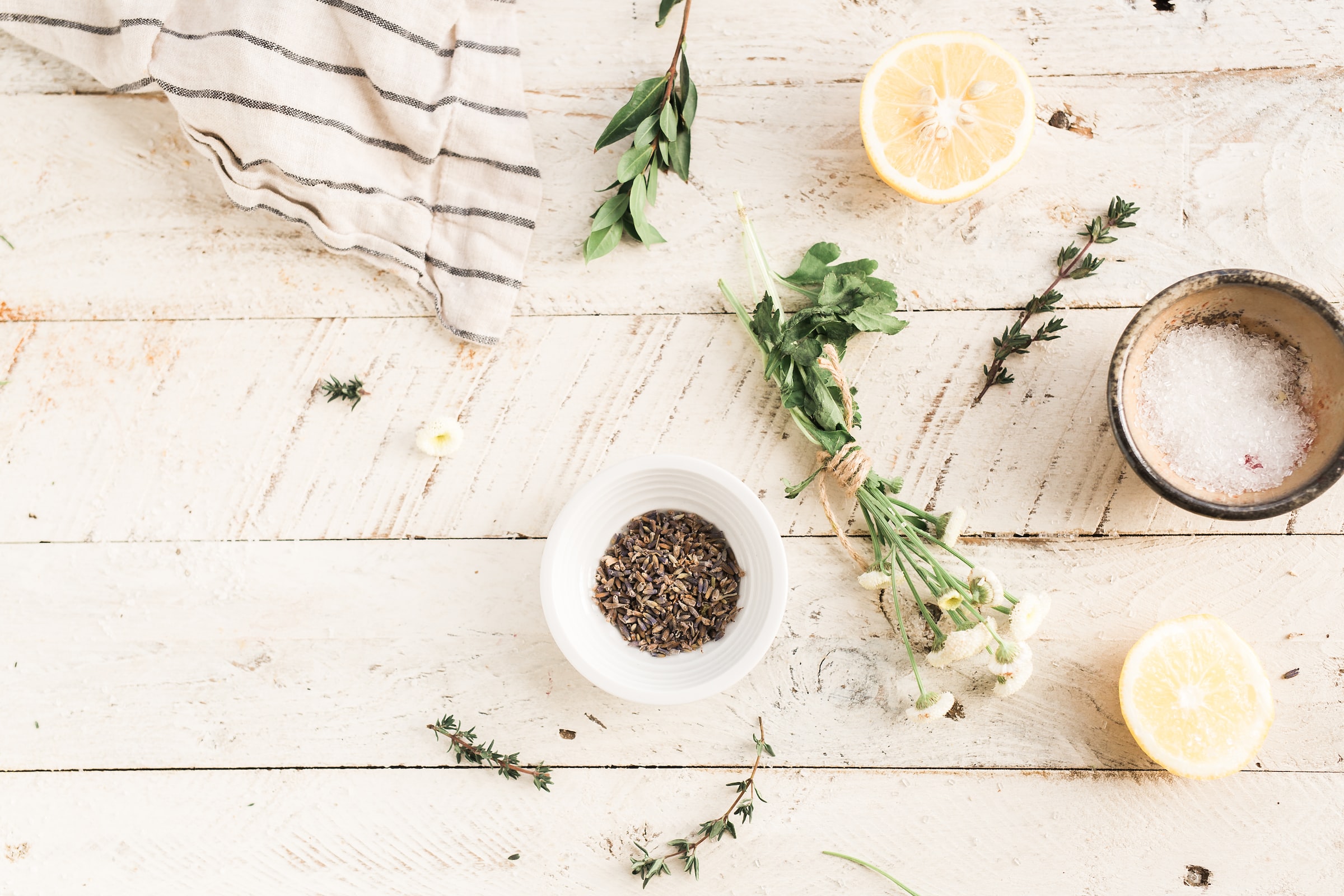
Many herbal extracts are used in treatment of cellulite to improve peripheral microcirculation, facilitate lymphatic drainage, boost collagen synthesis, speed up fat metabolism and restore hormonal balance. Below are a couple of my favourites.
Gotu kola – number one herb for beautiful skin, stimulates collagen production and production of fibroblasts. Excellent scar healer. Clears toxins and calms inflammation.13
Nettle – highly nutritious in vitamins and minerals, enhances liver function, calms allergic response. Helps clear toxins and supports lymphatic function.13
Dandelion – liver and kidney tonic, increases flow of digestive juices, aids absorption, relives water retention.13
Gynmenma – referred to as ‘sugar destroyer” in Ayurveda. Reduces sweet cravings and excessive appetite, helpful in weight loss, increases production of insulin, helps regulate blood glucose levels.13
Cinnamon – maintains healthy blood sugar level and boosts metabolism by stimulating digestive enzymes.13
Bitter orange - burns body fat and curbs appetite. Bitter orange contains synephrine, which causes thermogenesis that disintegrates fat and then removes it from your body.13
Ginkgo Biloba - contains compounds called terpene lactones, which help increase blood flow.13
Cayenne - is another circulatory stimulant. It effectively improves blood circulation, enhances metabolism and helps remove damaged skin cells. It also eliminates body toxins, which are one of the causes of cellulite. It also contains capsaicin, a thermogenic chemical, which may help speed up metabolism, decrease appetite and help burn more calories.13
Finally, higher levels of oestrogen may also play a role in cellulite severity. In particular, higher levels of oestrogen are linked with increased storage of subcutaneous fat in the thighs and hips, leading to the abnormal blood flow within the skin and fatty tissue. The exacerbation and progression of skin lesions correlates with pregnancy-related hyperestrogenism, or the use of birth control pills or hormone replacement therapy in postmenopausal women.9 Lower levels of oestrogen can also aggravate cellulite, as we age less oestrogen is produced causing poor circulation of blood and lymph and reduction in collagen production. There are many herbal hormonal balancers and phytoestrogens, such as Agnus Casus, Black Cohosh, Red Clover, that can be considered and, in most cases, these need to be individualized to the person and their physiology.
7. Creams and Topical Products
Creams and lotions, containing retinol, caffeine, black pepper can potentially help reduce the appearance of cellulite. Retinoic acid increases the turnover of epidermal cells and thickens skin layers to mask the lumpy appearance of fat cells. Caffeine stimulates breakdown of fat.7 Check out Organic Pharmacy and Comfort zone for some of my favorite clean and effective anti-cellulite creams, and serums.
8. Body wraps and scrubs
Anti-cellulite body wraps aim to boost circulation to help flush toxins away from your skin and underlying fat cells, for a smoother, bump-free appearance. Additionally, the dead skin will make your skin look dull, clogs pores, and prevents your body from absorbing moisture. Doing a scrub can help remove the dull and dead skin. Popular ingredients in anti-cellulite wraps include seaweed, coffee, orange peel and cayenne.
9. Exercise
Low physical activity and a sedentary lifestyle which also disturb correct functioning of the microcirculation and support the accumulation of fatty tissue. Cellulite is much improved by living an active lifestyle and incorporating various forms of movement into your day, whether jogging, walking, swimming, pilates or tennis. ‘It’s about good lymphatic flow, so keep that flow free by keeping active in any way you can’. Having said that, personalized approach is always best and working with a dedicated trainer targeting specific areas will get you faster to your goal.
10. Lifestyle
There is no doubt that unhealthy lifestyle will aggravate appearance of cellulite. Smoking results in significantly greater amounts of free radicals in the body, and the contraction of small blood vessels responsible for local micro-circulatory impairments.9 Alcohol consumption stimulates lipogenesis and causes body dehydration, resulting in the excessive storage of fat. Improperly selected clothes and footwear, especially wearing too close-fitting clothes, is definitely disturbing the venous outflow. Environmental toxins will slow down metabolism and accelerate ageing of the skin. Lack of rest and sleep will also create problems, because this is when we restore our balance, repair and detoxify tissues and recover the energy for the day ahead. Tiredness and stress will increase cortisol in your blood. Cortisol and other hormones secreted in response to stress can encourage fat deposition and an increased likelihood of cellulite. Moreover, stress will impair digestion and absorption of the vital nutrients for skin health.
There are many ways of reducing stress and increasing mindfulness, including Qigong, reiki, earthing, breathing exercises, yoga and meditation. It can be as simple as going for a walk, taking a relaxing bath or listening to singing bowls. It has to be enjoyable and easy to incorporate into your daily routine.
Our body has a wonderful ability to self-heal and self-regulate. All you need to do is to provide it with the right fuel (macro and micro nutrients), remove obstacles (toxins) and create the right mental and emotional environment for it to thrive via mindfulness practices. And finally, don’t forget to rest, laugh, and have fun! Sometimes this is the last secret ingredient that we all need to stay well and look well!
References
Sadick, N. (2022) Treatment for cellulite, NCBI. Intl Womens Dermatol. Available at: https://www.ncbi.nlm.nih.gov/pmc/articles/PMC63747... (Accessed: October 27, 2022).
Sadick, N. (2022) Treatment for cellulite, NCBI. Intl Womens Dermatol. Available at: https://www.ncbi.nlm.nih.gov/pmc/articles/PMC63747... (Accessed: October 27, 2022).
Maria Pereira de Godoy, J., de Fatima Guerreiro Godoy, M. and Carolina Pereira de Godoy, A. (2017) Considering the hypothesis of the pathophysiology of cellulite in its treatment, NCBI. Dermatol Reports. Available at: https://www.ncbi.nlm.nih.gov/pmc/articles/PMC56611... (Accessed: October 27, 2022).
Asadamongkol, B. and Zang, J.H. (2014) The development of hyperbaric oxygen therapy for skin rejuvenation and treatment of photoaging, NCBI. Dermatol Reports. Available at: https://www.ncbi.nlm.nih.gov/pmc/articles/PMC39776... (Accessed: October 27, 2022).
Boyer, J.L. (2013) Bile Formation and Secretion, NCBI. Compr Physiol. Available at: https://www.ncbi.nlm.nih.gov/pmc/articles/PMC40919... (Accessed: October 27, 2022).
Leszko, M. (2014) Cellulite in menopause, NCBI. Prz Menopauzalny. Available at: https://www.ncbi.nlm.nih.gov/pmc/articles/PMC45203... (Accessed: October 27, 2022).
Bass, L.S. and Kaminer, M.S. (2023) Insights Into the Pathophysiology of Cellulite: A Review, NCBI. Prz Menopauzalny. Available at: https://www.ncbi.nlm.nih.gov/pmc/articles/PMC75154... (Accessed: October 27, 2022).
Rouhi-Boroujeni, H. et al. (2015) Herbs with anti-lipid effects and their interactions with statins as a chemical anti- hyperlipidemia group drugs: A systematic review, NCBI. ARYA Atheroscler. Available at: https://www.ncbi.nlm.nih.gov/pmc/articles/PMC45936... (Accessed: October 27, 2022).
Tokarska, K. et al. (2018) Cellulite: a cosmetic or systemic issue? Contemporary views on the etiopathogenesis of cellulite, NCBI. Postepy Dermatol Alergol. Available at: https://www.ncbi.nlm.nih.gov/pmc/articles/PMC62325... (Accessed: October 27, 2022).
Rawlings, A.V. (2006) “Cellulite and its treatment ,” International Journal Of Cosmetic Science, pp. 175–190.
Wunsch, A. and Karsten Matuschka, K. (2014) A Controlled Trial to Determine the Efficacy of Red and Near-Infrared Light Treatment in Patient Satisfaction, Reduction of Fine Lines, Wrinkles, Skin Roughness, and Intradermal Collagen Density Increase, NCBI. Photomed Laser Surg. Available at: https://www.ncbi.nlm.nih.gov/pmc/articles/PMC39261... (Accessed: October 27, 2022).
Chervinskaya, A.V. (2006) “Prospects Of Halotherapy In Sanatorium-And-Spa Dermatology And Cosmetology,” Federal Medical and Biological Agency, pp. 175–190.
McIntyre , A. (2010) The Complete Herbal Tutor. London, United Kingdom: Gaia, Octopus Publishing Group, pp 119-167
Tags: Cellulite, Health, Wellness, Tips | Author: Jenya Di Pierro
